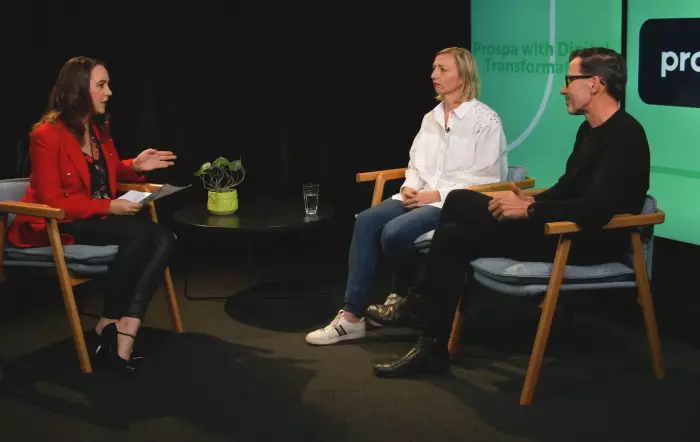“Good reporting and good data are really at the crux of growing your small business.”
That’s according to Becky Erwood, founder and director of the FED meal delivery service, who said she believed it’s “a misnomer that you have to spend a huge amount of money to have access to really, really great tools and great software”.
Erwood was part of a panel for Prospa’s Small Business Webinar series in partnership with BusinessDesk. This third webinar looked at how small businesses can improve digital transformation. Joining her were BusinessDesk investments editor Frances Cook and the founder and managing director of YoungShand, Duncan Shand.
Available tools
Small businesses are often perceived as the bottom-of-the-barrel scraping underdogs of the business world, but thanks to the ongoing advances in digital technology, it’s become easier than ever for a small business owner to compete with much larger companies.
Erwood said there are a huge number of tools available nowdays that can assist a small business with data on customer behaviour, sales and analytics.
As an example, she referenced Shopify, which her business uses.
“Of course, big companies are spending a lot of money on custom builds and custom software, but there are a lot of things out there that are excellent, such as Shopify.
“This is a platform that you can customise, and you’ve got this huge company out there that’s doing all these developments on your behalf that you can have access to. And not at a great cost, actually,” Erwood said.
Shand agreed with Erwood and said that’s exactly what digital transformation has done, it’s “closed that gap between a small business and a big business”.
He said 20 years ago, a small business wouldn’t have been able to compete with a big business because you couldn’t have a shop, you couldn’t make ads and you couldn’t promote your business to people very easily.
“With this whole digital transformation, being able to use tools like Shopify, Mailchimp, Active Campaigns have enabled a small business to have a really strong, professional image to be able to connect with customers.
“Yes, you still need to invest and yes it’s still going to cost money, but you’re not spending hundreds of thousands of dollars doing it,” Shand said.
READ: Webinar 1: How can small businesses do better HR
READ: Webinar 2: How can small businesses do better marketing
Meanwhile, Cook referenced a recent survey conducted by Prospa on small business owners which found that 13% said doing business online was a priority for them.
In response, Shand said that yes, being a small business owner is indeed hard because they’re constantly “bombarded by so many things” in their day.
“You don’t have the luxury of just being the CEO; you’re often the salespeople, the support team, and the person making your product as well.
“To me, half of it is deciding what you’re going to focus on and then making a plan to do it. If you can get through that and decide you really need to make this a priority, it’s about choosing what not to do so you can focus on making some solid plans to actually get that business digitally enabled,” he said.
'Left behind'
Shand said one of the traps small businesses in NZ tend to fall into is that they’re “just doing enough to survive”.
But, he added, covid has shown that New Zealanders are very happy to shop online.
“So, New Zealand businesses need to get online and need to really have a slick service, otherwise they’re going to be left behind.”
According to Shand, the following are core things a small business needs to focus on:
- Attract new clients.
- Tell their story.
- Manage their existing customers.
- Be able to make a sale.
- Service and follow-up.
Meanwhile, Erwood said prioritising is important for gaining a competitive advantage when it comes to the number of resources at your disposal.
“It is a challenge, particularly in our space, where we’ve got a lot of big players who’ve got extremely advanced platforms. Digital fluency is very high among consumers and that means their expectations are very high.
“The plus point is they’re better able to self-serve, but the other side of that is it means their expectations of how your site should perform are also incredibly high.
“So, you do need to prioritise and that’s about reading your data, you’ll know from dealing with your customers on a day-to-day basis what those pinch points are and where those priorities should be,” Erwood said.
According to Shand, it all comes back to your focus and priorities as a small business owner in a digital world.
“It’s about focusing, deciding what you’re going to do and putting a plan in place to become more digital, and then get online”.
To find out more, you can watch the full interview in the video below:















